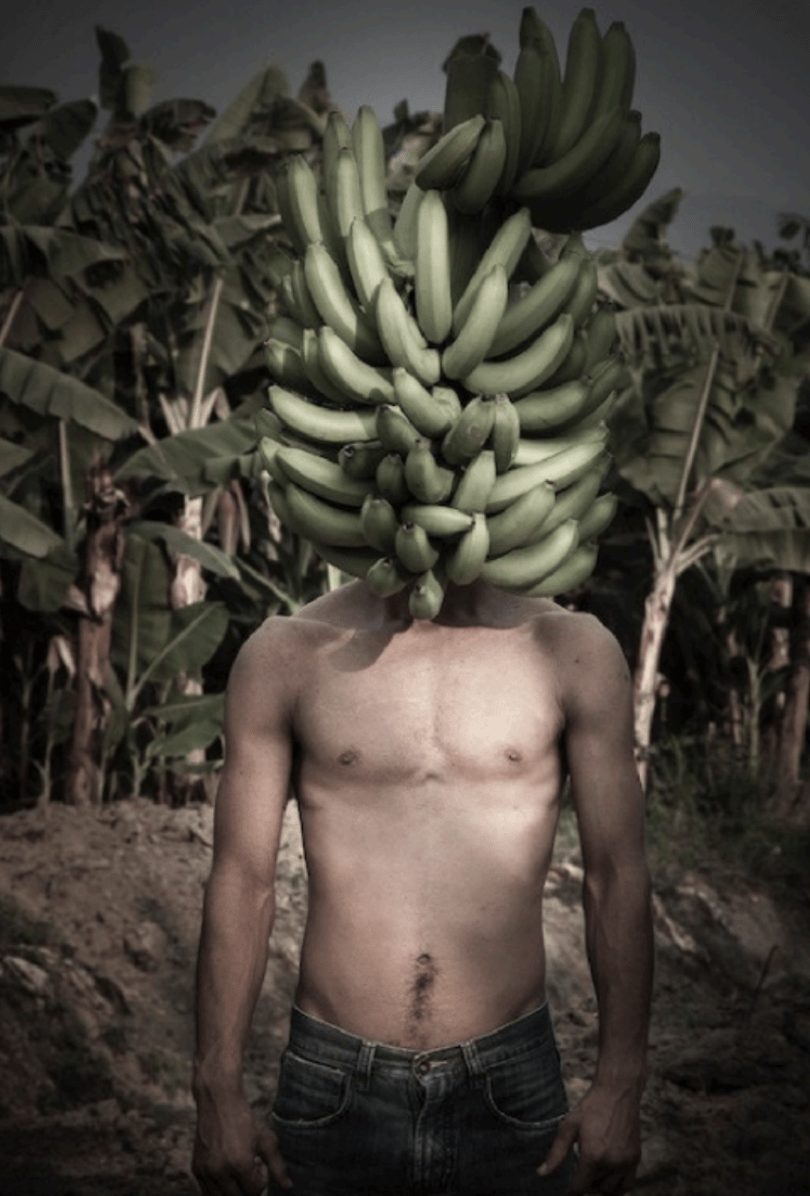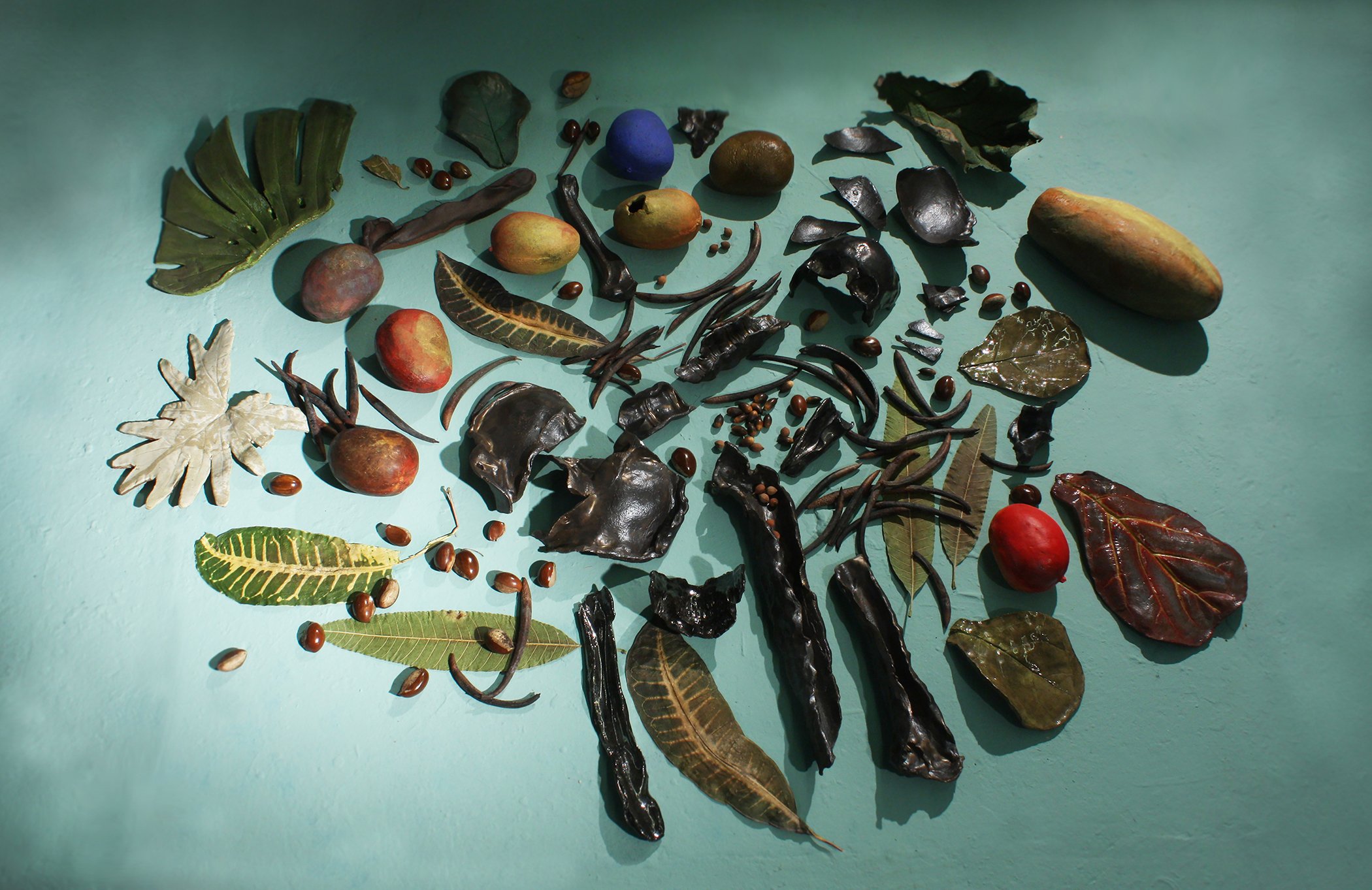From the aquamarine surface to seagrass meadows below, from mangrove-studded estuaries to the outer coral reef, Biscayne Bay is exuberantly biodiverse. And its waters permeate both oolite and memory. The bay has defined culture and community in South Florida for thousands of generations.
Biscayne, a group exhibition currently on view at The Kampong, explores the human and beyond-human connections that this body of water has made possible over a vast continuum of time. Curator Kate Fleming of Bridge Initiative brought together 38 artists to express their relationships with the bay. Their work invites viewers to deepen their own understanding of this unique ecological and cultural waterscape on the edge and at the heart of our storied garden.
First image: Kampong by Christina Pettersson. Second image: Performance by Loni Johnson. Still from exhibition video by Rodrigo Gaya
To further the ripples of this exhibition as they move beyond Biscayne and into the waterways and conversations that connect us all, we interviewed several participating artists here. At the National Tropical Botanical Garden, we envision a sustainable future where flourishing relationships are restored between plants, people, and places. We asked artists what flourishing relationships mean to them and their own vision for our shared environment. Find our conversations below.
Visitors to The Kampong can experience the Biscayne exhibit as part of their garden tour, included in the price of admission. To ensure a seamless experience, we encourage making online reservations, as parking is limited. Join us for the exhibition’s closing reception on Saturday, December 2, 2023 from 6:30-8:30 pm! Register here. For additional information or inquiries, please contact us at kampong@ntbg.org.

Mister Bananaman, 66″ x 44″, 2013, archival pigment on paper. Courtesy of the Artist and Dot Fiftyone Gallery
NTBG is working toward a vision where flourishing relationships are restored between plants, people, and places. In your view, what do “flourishing relationships” look like?
In my perspective, “flourishing relationships” encompass interactions between humans and nature where both parties mutually benefit and prosper from their engagements. It entails a harmonious coexistence where the well-being of both humans and the natural world is enhanced through their interconnectedness.
How do you differentiate between the terms ‘community’ and ‘ecosystem,’ and where do you see their boundaries intersecting or diverging?
Distinguishing between community and ecosystem involves recognizing that one can be a component of an ecosystem without necessarily participating in a community… Ecosystems rely on a multitude of diverse relationships and interactions to ensure their sustainability. Conversely, communities require a more profound level of intimacy in these interactions to prosper and evolve…
How do plants, and your relationship with them, influence your artistic practice?
Within the context of my artistic practice, the incorporation of tropical plants and fruits serves as a subversive means of interrogating notions of place and identity. The introduction of tropical flora is characterized by its unpredictability, strategically manifesting within specific scenarios. At times, these botanical elements assert their dominance, enveloping the scene or characters. On other occasions, they assume a captivating or poetic role, by mimicking human interactions.
This botanical imagery operates as a potent visual language, enabling me to underscore subtle undercurrents of tensions and resistance. The juxtaposition of the wild, the exuberant against the backdrop of human endeavor, attempts to challenge conflicting dynamics between humanity, culture, and nature.
First image: detail from The Unexpected Guest. Second image: Gonzalo Fuenmayor. Photo by Edson Smitter

Curated Cabinet by Priscilla Aleman
NTBG is working toward a vision where flourishing relationships are restored between plants, people, and places. In your view, what do “flourishing relationships” look like?
When I think of flourishing relationships, I remember my grandfather and the banana trees he nurtured in his backyard. My first encounter growing my own fruits was with him. When I first came back to Miami after graduating from art school in New York, he gave me a small cutting of the banana tree from his yard. I was in my early twenties and hadn’t yet seen how most of the tropical fruits I see in the grocery store grow. My mind was blown seeing the chandelier of bananas unfurling from a torpedo-like flower. He and the blooming banana opened my eyes. Through caring for this plant I found that you could feed yourself, feed the soul, and feed relationships. This shared love of plants became a deep bond between my grandfather and I.
My grandfather recently passed. I was headed to an artist residency in Suriname, with a happenstance layover in Miami. My parents called as I was boarding the flight to let me know he had slipped into a coma. They didn’t know if he was going to make it, and wanted to give me the choice to visit. Full of emotion, feeling far and near simultaneously, I closed my eyes and thought of our relationship, how intertwined we were. I thought of the things we grow and the landscapes we tend, how we see love in much the same way in the world. I felt that in a shared vision of love, that whatever I see with my eyes, he will also see in his dreams—so I decided to go and feed him beautiful dreams. In Suriname, I encountered banana trees in the middle of my residency and felt my grandfather there with me. At that moment, my mother texted: my grandfather had opened his eyes. I feel that there is a portal, threshold, or connecting realm that plants offer us. I was able to see him one more time before he made his transition. The fruit trees in the yard continue to flourish.
How do you differentiate between the terms ‘community’ and ‘ecosystem,’ and where do you see their boundaries intersecting or diverging?
I think they are synonymous in many ways. They’re both about exchange and involve diversity. What each organism or human being brings to the collective allows for evolution, innovation, growth. When I envision community, I see a series of hands, each exchanging resources with each other. When I envision ecosystems, I see a world of resources coming into being.
How do plants, and your relationship with them, influence your artistic practice?
At first, sculpture and gardening were two different realms for me. When I was done working in the studio, I would then go pull weeds and spend time with my grandparents in their garden. It wasn’t until I attended Columbia’s MFA program in New York, that I began growing my studio intentionally. I hung grow lamps and grew coconuts, among other tropical plants from home indoors. In trying to make the atmosphere comfortable for these tropical plants, misting and tending to them, I also made the space feel like home for myself. Growing plants quickly became integrated into my sculptural practice. My hands were equally happy in dirt, as they were in clay or plaster. From there, these practices continued to blend. I’m currently using plant materials in my sculptural work. I collect often at Montgomery Botanical Center as their artist in residence. There I explore the wide diversity of palm trees and genetic identities of plants. Their genes, like ours, hold the knowledge of generations. They hold communities within themselves. I have begun braiding this idea of plant ancestry and communion together with my own connections. As I create portraits of myself, friends, and family I am making a portrait of the collective, and each person like a seed holds a whole collective within—a leading edge of other lives and root systems that have come before.
Beyond Portrait by Priscilla Aleman